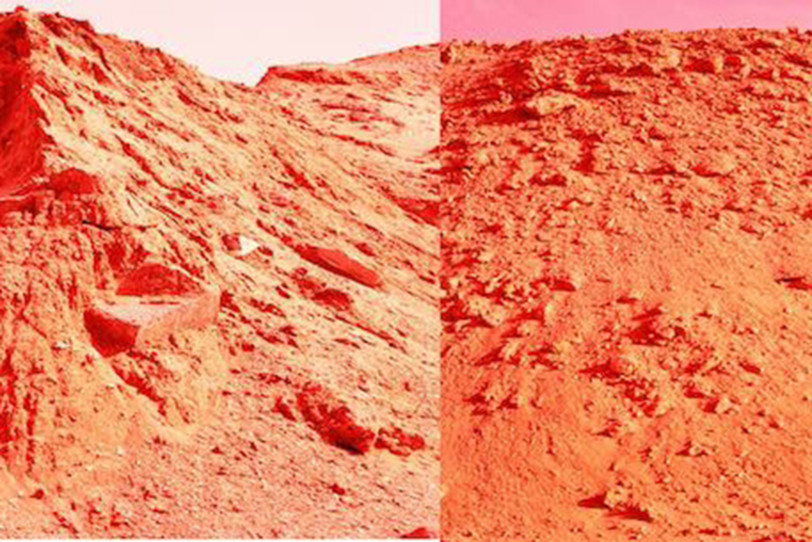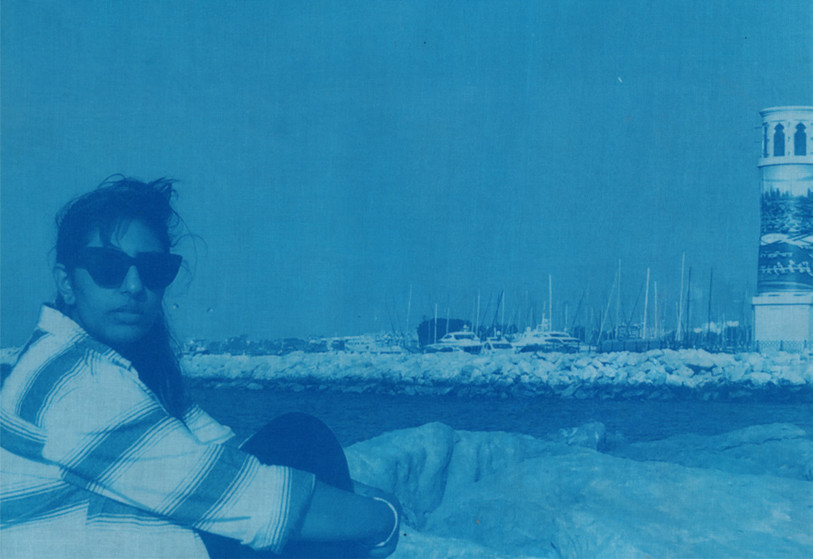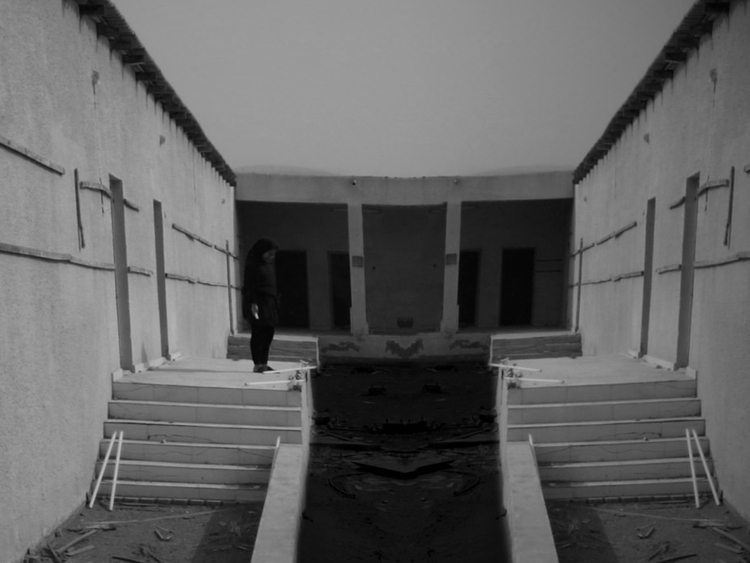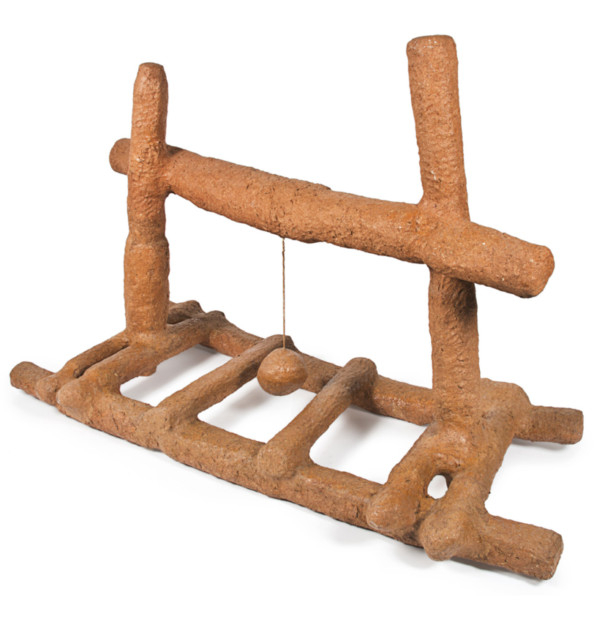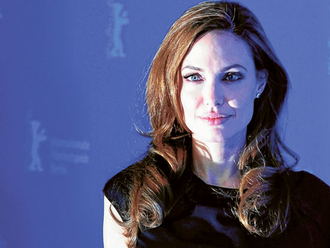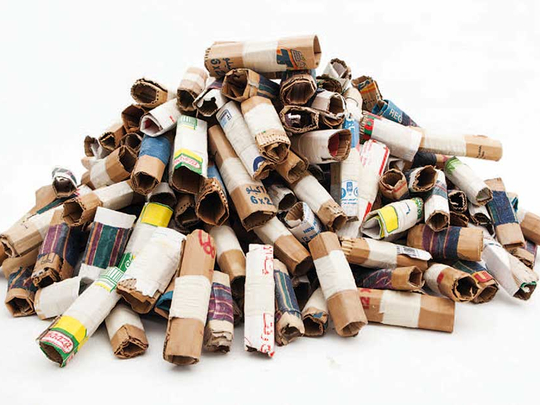
As Dubai makes its place in the international art scene and looks forward to welcoming the art world to a new edition of Dubai Art Season, it is also important to look back at how contemporary art developed in the UAE, how the rapid changes in the country have impacted the current generation of Emirati artists and whether there is a link between the past and the present. This contemplation of the past, and assessment of the present is particularly pertinent in the context of the passing away of Hassan Sharif, artist, writer, founding member of the Emirates Fine Arts Society, a pioneer of conceptual art in the country, and a mentor to two generations of Emirati artists.
Is Old Gold?, the latest exhibition at The Gallery of Light, Ductac, is an interesting experiment in this direction. The curators, Cristiana de Marchi and Muhanad Ali, invited 10 young Emirati artists to produce new commissioned works in response to the work of five artists from the first generation, whose practice is characterised by a spirit of experimentation that organically shaped the contemporary art movement in the UAE. These artists, known as the ‘5 UAE’, include Hassan Sharif, and his students, Mohammed Ahmed Ibrahim, Mohammad Kazem, Abdullah Al Saadi and Hussain Sharif.
The 10 young artists selected for this show are Shaikha Al Mazrou, Taqwa Al Naqbi, Maitha Abdalla, Amal Al Khaja, Jumairy, Moza Almatrooshi, Fatima Albudoor, Hind Mezaina, Alaa Edris and Alia Lootah. They were provided with comprehensive written and visual information about the five senior artists, including the writings of Hassan Sharif, giving them the opportunity to really engage with each artist’s practice. Two artists from the group were asked to respond to the work of each senior artist but with the full freedom to create what they wanted.
In the run-up to the exhibition, the curators organised a series of talks, inviting UAE-based artists from different generations, curators, art educators, gallerists and writers to discuss various issues relevant to the art scene in the UAE and the wider region. The topics included, ‘Knowledge Transmission: From the atelier to remote teaching — Dominions of Ideas and Inheritance’; ‘Imitation, Plagiarism and Tribute: Recurrences in visual arts’; ‘The Validation System: self-sustainability or foreign acknowledgement’; and ‘The Valley in Between: Generational disconnections, divergent agendas or a possible continuity’.
The artworks produced by the young artists after this process of research, discussion and mentorship, include videos, sculptures, photographic works and installations created with ink and tape, with handmade paper incorporating fabrics that are meaningful to the artist and other materials. They deal with themes of irreversibility, identity, gender, memory, fantasy, social issues, and experimentation with ideas. While some artists have responded quite directly to works or mental approaches of the older generation, others have produced pieces that have a playful connection to the past, or are defiantly disconnected from it.
The exhibition showcases these new commissions by a new generation alongside seminal works by the ‘5 UAE’, creating a link between them while also exploring the creative and educational gap between the two generations. It reflects on the atelier atmosphere of innovative exchange initiated by Hassan Sharif, and sustained by his four students, as well as the absence of such interaction today.
The process and outcome consider the socio-political concerns which have influenced the change in the UAE’s contemporary art scene by contemplating the country’s rapidly shifting contexts as well as other, more inherently personal motivations and choices. As suggested by the title, the show essentially questions if, how, and why the spirit of experimentation that shaped the early days of Avant garde contemporary art in the UAE has been lost today, and whether it can or should be recovered in the current context.
“I have worked closely with the ‘5 UAE’ and seen how they discussed various subjects, critiqued, supported and sustained each other’s practice collaboratively in the absence of support from galleries and institutions, and most importantly, continued Sharif’s commitment to educating the next generation of artists. But this has stopped now. For this show, we tried to recreate that atmosphere of mentorship and transmission of knowledge and experience between two generations of Emirati artists. Our aim is to raise questions about the origin of this gap between these generations, the differences in their motivations, education and environment, and whether there is a possibility of continuity between them. Above all we wanted to give the young artists an opportunity to have an informed approach to the practice of the ‘5 UAE’, and respond to their practice or a specific work, either by having a dialogue, a disagreement, or even a departure in another direction,” de Marchi says.
Ali adds, “I have been working mostly with young artists, and have observed that although they have much more support from the system today, they seem to lack the motivation and cohesiveness of the previous generation. We are interested in studying how the shifting infrastructure of the UAE has directly and indirectly influenced art production in the UAE. In this context, a key moment of disconnect is that the mentoring system started by Sharif individually and at the Emirates Fine Arts Society was replaced by art academies that unfortunately do not have courses on local art history. One of the aims of this show is to initiate a discussion on issues such as the need for more structured art education policies and nation-wide audience development strategies. We were happy to see artists of all generations, including students attending the talks, and we hope to continue this dialogue through more talks and critique sessions the can be a bridge between formal and informal education. But above all, we want to focus on the younger generation on a professional level, and push them to go beyond their comfort zone, connect with art history, take advantage of the infrastructure to experiment, and reflect more responsibly on their role in a fast evolving community.”
The exhibition is part of Ductac’s East/East-East platform, aimed at initiating a new approach to an experimental East-arts narrative, that is not defined by Western perspectives.
Is Old Gold? will run at The Gallery of Light, Dubai Community Theatre & Arts Centre, Mall of Emirates, until April 7. For more information, and recordings of the talks go to http://www.easteasteast.org/is-old-gold/#/programme-2/.



